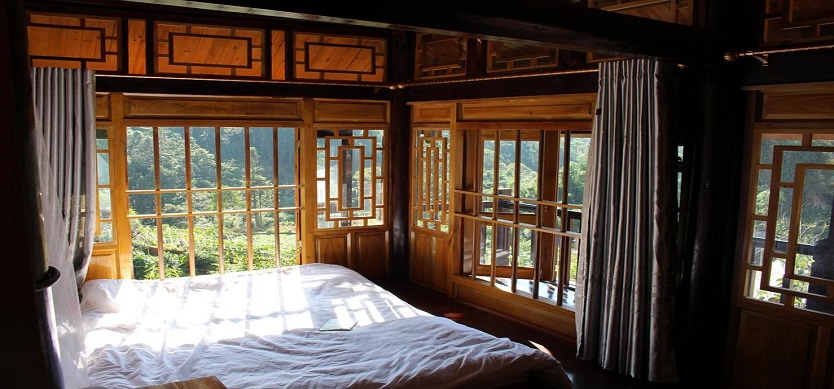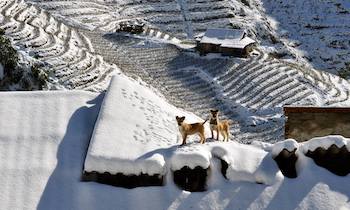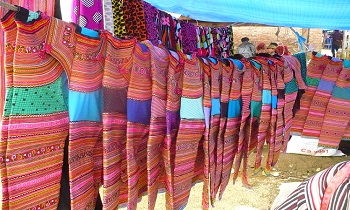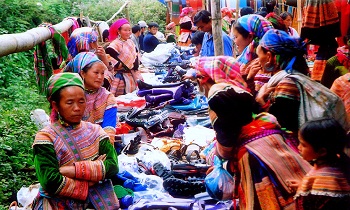Ta Van Giay, a hamlet of the Giay in Sapa Township, Lao Cai Province, is nestled in Muong Hoa Valley. The Hoa, or Flower, Spring provides water for the whole hamlet. The Giay take into consideration several things in building a house to ensure long-lasting happiness and prosperity for family members. The Giay consider the terrain and the orientation of the house the two most important factors affecting the success or failure of the house’s owner. A shaman will pray to the genies to help them find a lot suitable for the family and clan.

Houses of the Giay in Sapa
The Giay prefer to live in a valley near a water source for its peacefulness, cool air, and sustainability for rice cultivation. The right orientation of the house to match the house’s owner will bring happiness and prosperity to the whole family.
San Chang, a senior resident of Ta Van Giay Village, said, “The area in front of the house should be wide and clear. It should be backed by a high mountain. We avoid having a hill or big rock blocking the house’s front.”
The Giay think a house backing against a mountain will be protected by the mountain genie. If the house looks out on a spacious area, the owner will enjoy business prosperity.
Villager Hoang Van Lu said, “We choose the house’s orientation based on the owner’s age. On the construction day, family members whose ages are not compatible with the date of the construction day must stay away from the site until they’ve finished building it.”
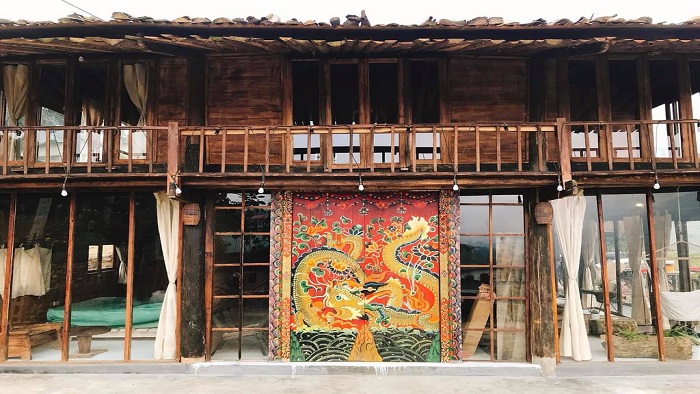
Houses of the Giay in Sapa
The Giay use wood or bamboo to build a house, depending on the family’s wealth. They split bamboo trees, weave them to make panels, and apply a mixture of clay and straw to make walls.
“The trees must be intact, for example, the tops of the trees were not struck by lightning and had no crow’s nest. We use any kind of tree,” San Chang noted.
Traditional Giay houses have 3 doors: an entrance door into the middle chamber, another door into the kitchen, and a 3rd door leading to the backyard.
San Chang elaborates: “The reason we need a door to the kitchen is that there are things forbidden to pass through the entrance door. For example, we don’t carry fresh meat through the main entrance, and a woman who just gave birth to a child should not pass through the main entrance if the ancestors have not been informed of the child through a ritual ceremony.”
Colorful cloth balls are often hung in front of the main entrance of a Giay house - another unique tradition being preserved by the Giay for their younger generations.
